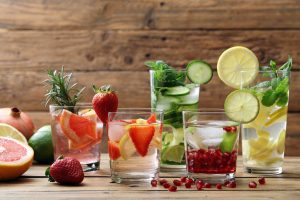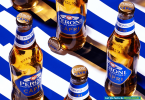2020 US off-trade predictions: Nielsen

Nielsen has been tracking a move toward “healthier” drinking in the US off-trade and this trend will continue into 2020.
He states that younger generations are leading this shift and it will affect drinking quantities and preferences.
“Consumer desires will also drive more transparency in labelling and supplier product innovations,’ he adds.
Going into 2020, expect to see growth in the following:
- lower ABV spirits/cordials
- lower ABV ready-to-drink cocktails
- lower ABV and lower calorie IPAs
- more alternative beverages with no/low sugar and carbs and low-calorie options
- a greater selection of non-alcoholic craft beers with major craft brewers starting to play in this space
- active, lifestyle-oriented drinks that tie into consumer interest in their active routines
Spirits to drive most consistent growth
Building on an already upward trajectory, spirits will experience the most growth from Whiskey, Tequila, Cognac, ready-to-drink/prepared cocktails and Tito’s Handmade Vodka, the top-selling spirits brand in the US, still experiencing double-digit growth. Premium and ultra-Premium segments will continue to lead the category’s growth at the expense of lower price tiers.
Spirits have the advantage of a versatile product range with multiple drink types, flavours, styles and mixing opportunities — meeting the desires of the cocktail culture and appealing to a broad consumer base (age, gender and race/ethnicity).
Suppliers and distributors to put more energy & investment into e-commerce
While e-commerce sales of alcoholic beverages continue to grow, the industry has struggled to keep up with broader e-commerce expansion in part due to complex alcohol rules and regulations but 2020 will represent a turning point in the industry’s efforts. Key players will ramp-up their investment, recognising the potential of impulse-purchasing declines in mainstream stores as consumers fill more of their overall shopping needs online — and not via a store trip.
Growth in the beer industry to focus on nearly everything but beer
Expect to see more acquisitions — particularly by big beer companies — in spirits and some selected growing segments of wine. Brewers of all sizes will invest and innovate in ready-to-drink cocktails — and even traditional spirit products.
Beer brands will continue to try to play in the space adjacent to cannabis through products that use hemp and emulate the olfactory experience of cannabis.
Craft beer will continue to find success with styles found in more traditional beer segments (eg American and Mexican lagers).
Ready-to-drink cocktails across beer, wine and spirits to boom
Packaging will focus on the convenience of slim cans and alternatives. Consumers will increasingly see traditional cocktails with a twist to make them more interesting (eg Mezcal Mule). Retailers will continue to focus on convenience through tactics like prepared cocktail displays regardless of the alcohol base.
Table wine to encounter struggles but opportunities remain for total wine
Table wine sales will decline as long as the US economy continues to be healthy, with the biggest losses coming from lower-priced wine in bottles.
Pockets of growth in wine will including the following:
- sparkling wine, driven largely by Prosecco
- rosé, ‘though growth is unlikely to be more than single digits
- wines from New Zealand and Oregon, with potential also from Eastern European countries
- wines in cans and alternative packaging
- wine spritzers and wine-based cocktails in cans
- firm entrance into the health and wellness conversation via lower ABV and biodynamic wine.
Hard seltzer’s growth to be supplemented by “hard” beverages of other types
The number of players in the hard seltzer space will double in 2020, adding products from big brewers/mainstream brands, craft brewers and spirit companies.
Additionally, we will see an increase in sub-segments of hard seltzers, focused on attributes like higher ABV, healthy ingredients and features, bolder flavours and heightened product development as well as innovation around hard Kombucha and hard coffee. These options won’t make as big-a-punch as leading seltzers on the market today but they will attract a different type of consumer/drinker.
Nielsen doesn’t expect growth rates for hard seltzer to match those of last Summer in the US as the base of business grows substantially. At the same time, the introduction of so many new brands by new players, along with the introduction of new flavours, packaging and formulas by existing players, will help to fuel growth.
2019’s leading indicators into the future of alcoholic beverages in the US will kick into high gear this year, believes Danny Brager. From the continued rise of hard seltzer and ready-to-drink cocktails to the stability of sparkling wine, he says, alcoholic beverage players have their work cut out in keeping pace with a consumer base whose choices are often motivated by health and convenience.








